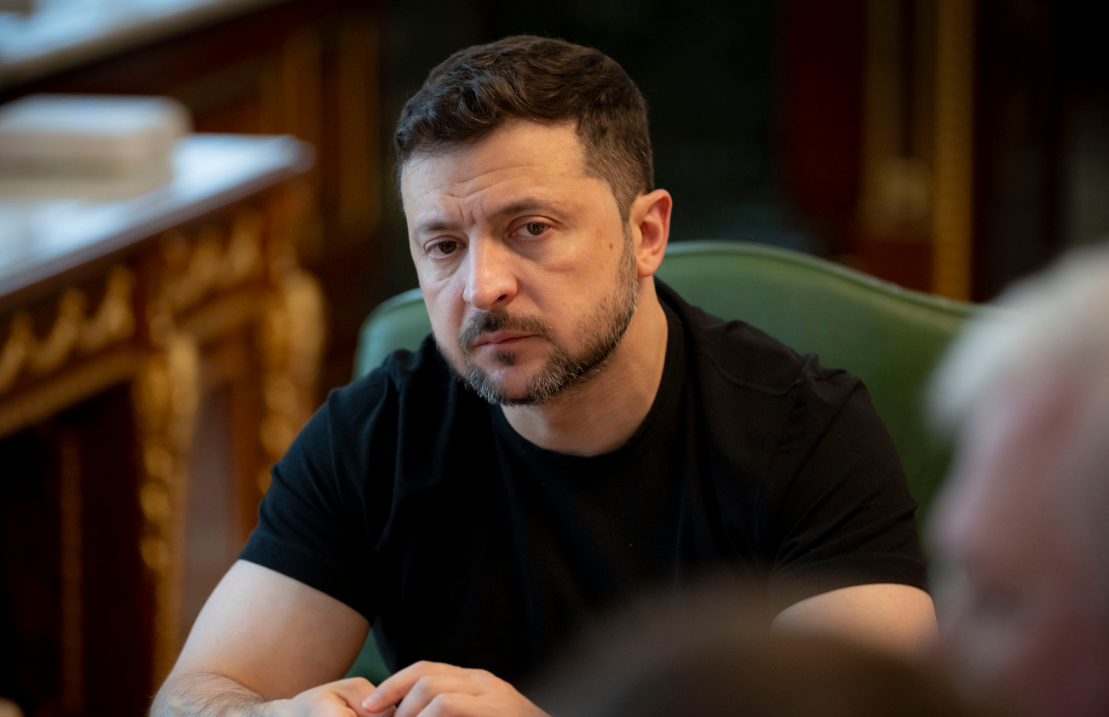U.S. Diverts 20,000 Missiles to Middle East: In a startling revelation, Ukrainian President Zelensky expressed his shock and frustration after discovering that 20,000 air defense missiles—originally pledged to Ukraine by the United States—have been rerouted to American forces in the Middle East. Speaking in an interview with ABC News, Zelensky said that Ukraine’s Defense Minister broke the news to him that very morning, calling it a devastating blow to the country’s ability to combat relentless Russian drone strikes.
U.S. Diverts 20,000 Missiles to Middle East
In a startling revelation, Ukrainian President Volodymyr Zelensky expressed his shock and frustration after discovering that 20,000 air defense missiles—originally pledged to Ukraine by the United States—have been rerouted to American forces in the Middle East. Speaking in an interview with ABC News, Zelensky said that Ukraine’s Defense Minister broke the news to him that very morning, calling it a devastating blow to the country’s ability to combat relentless Russian drone strikes.
According to The Wall Street Journal, not only were the missiles diverted, but even their specialized fuses—intended to protect Ukraine’s skies—were also redirected. This latest development has severely impacted Ukraine’s defense capabilities at a time when Russian attacks are intensifying.
This decision reflects President Donald Trump’s revived “America First” doctrine, which prioritizes domestic military and strategic interests over foreign commitments. Trump has frequently criticized what he sees as Ukraine’s excessive demands for aid and has clashed publicly with President Zelensky. In a heated Oval Office confrontation back in February 2025, Trump reportedly accused Zelensky of being ungrateful and unwilling to engage in peace negotiations with Russia. “Your country is in big trouble,” Trump warned, making it clear that U.S. support would no longer be limitless.
Zelensky, visibly exasperated, emphasized that the missiles—specifically designed to counter Russian Shahed drones—were not just affordable but relied on a special technology crucial to Ukraine’s frontline defense. “This week we were counting on this project,” Zelensky said, highlighting how critical the aid was.
The pressure on Ukraine further intensified when U.S. Defense Secretary Pete Hexith, a close ally of Trump, skipped an international meeting meant to coordinate aid for Ukraine. Analysts see this move as a clear signal for Europe to step up and take the lead in supporting Kyiv. The United States, meanwhile, is redirecting its strategic focus to the Pacific in light of rising tensions with China and shoring up its Middle East presence amid threats from Iran-backed forces.
Moscow seized on the moment, with Russian Foreign Ministry spokesperson Maria Zakharova mocking Zelensky’s plight and labeling him a “dangerous threat” for opposing Trump’s proposed ceasefire plan. Her comments reflect growing Russian confidence as Western support for Ukraine becomes uncertain.
Zelensky accused the United States of breaking promises made during the Biden administration, pointing to the missile redirection as a betrayal of trust. He also criticized Washington for shifting blame while ignoring Ukraine’s efforts to secure long-term economic independence, including a failed minerals deal and untapped natural gas reserves.
European leaders, including France’s President Emmanuel Macron and British Prime Minister Keir Starmer, have vowed to increase support. However, the EU now faces an uphill battle in trying to fill the massive void left by the U.S. withdrawal.
Trump’s decision sends a crystal-clear message: American resources will serve American interests first. As Ukraine scrambles to reassess its defense strategy, it must now adapt quickly—or lean more heavily on an already strained European alliance.
Disclaimer:
This article is based on publicly available news reports, political interviews, and official statements from involved parties as of June 2025. It is intended for informational and editorial purposes only and does not represent the personal views or political endorsements of the author or the blog platform. The global geopolitical landscape is highly fluid and subject to rapid change, and events described herein may evolve further.
Readers are strongly encouraged to verify developments from trusted international news agencies and to consider multiple perspectives when forming opinions. Any resemblance to fictional characters or inaccurate attributions is unintentional. This blog does not guarantee the factual accuracy of every reported statement and disclaims liability for any errors or interpretations drawn from the content

